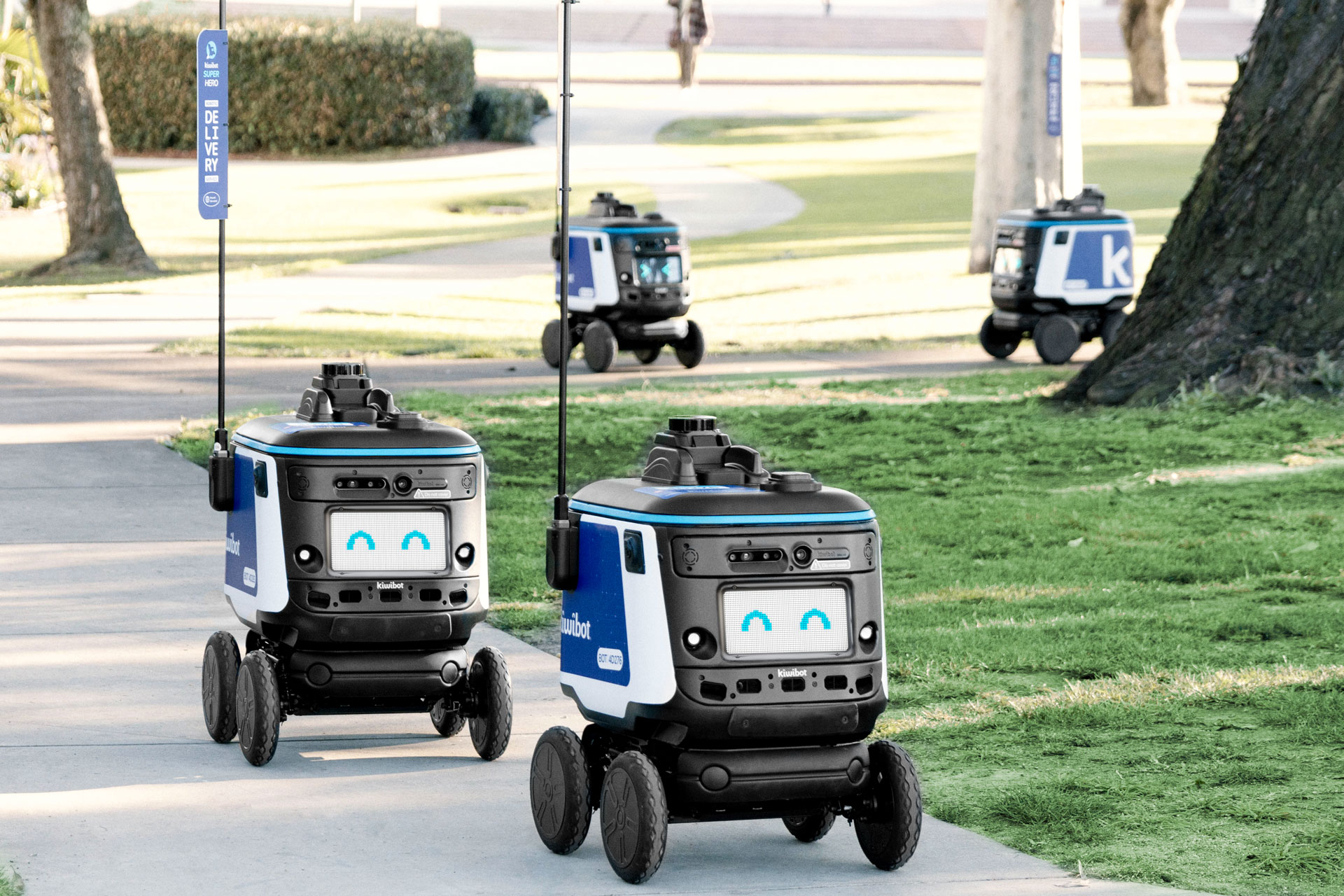Personal Delivery Devices
Personal Delivery Device (PDD) operations are active in Maryland. MDOT monitors emerging and innovative technologies such as personal delivery devices (PDDs) to adapt to, and take advantage of, technologies reshaping mobility choices. PDDs have emerged as an innovative technology promising to improve the efficiency of deliveries.
Information is outlined here for PDD Operators to encourage the use of PDDs for furthering mobility, equity, and safety in Maryland’s transportation ecospace. Staff is readily available to answer any additional questions you might have by emailing [email protected]

What to Know About Personal Delivery Devices
A 2021 law set out specific rules for PDDs in Maryland, including:
- Authorizing PDDs to operate on any highway, roadway, sidewalk, shoulder, footpath, bicycle trail, or crosswalk in the State
- Prohibiting PDDs from being operated in certain manners
- Creating certain marking, equipment, and insurance requirements for PDDs
- Requiring an operator of PDDs to file an emergency response plan (see below) with the Maryland Department of Transportation Motor Vehicle Administration
- Requiring an operator of PDDs to give at least 30-day prior notice to the governing body of each county and municipality the operator intends to operate
- Requiring an operator of PDDs to comply with local laws
- Excluding PDDs from the defined terms “motor vehicle” and “vehicle” and establishing an exception to motor vehicle registration requirements for PDDs
It also sets out these definitions:
Personal Delivery Device is a powered device that:
- Is operated primarily on shoulders, sidewalks, and crosswalks;
- Is intended for the transport of property on public rights-of-way;
- Weighs not more than 550 pounds, excluding cargo; and
- Is capable of navigating with or without the active control or monitoring of an individual.
Personal Delivery Device Operator is an entity or its agent that exercises active or passive physical control or monitoring over the navigation system and operation of a personal delivery device; Personal Delivery Device Operator does not include a person that:
- Requests or receives the services of a PDD to transport property; or
- Arranges for and dispatches a PDD to provide service to another person.
Personal Delivery Device Operators – Get Started
Review the information above on “What to know about PDDs?” and the 2021 law for specific instructions and details on PDD allowances
Know that PDD Operators in Maryland are required to provide appropriate equipment for lighting on each PDD during operations between sunset and sunrise, to include:
- Light on both the front and rear of the PDD that is visible on all sides from a distance of at least 300 feet;
- No bright projecting strobe; and
- Reflective material on the PDDs as necessary.
Submit the required Emergency Response Plan at least 30 days prior to beginning operations. The Plan should be submitted to [email protected]
The Emergency Response Plan should include information on:
- Verification that the PDD will yield to emergency vehicles in appropriate situations;
- Verification that the PDD will stop for emergency vehicles in appropriate situations;
- Verification that the PDD will recognize and respond appropriately to work/construction zone traffic control measures such as temporary traffic control devices;
- Verification that the PDD will respond appropriately to manual traffic direction including directions to detour, drive the wrong way, drive on a shoulder or otherwise disobey programmed routing and normal traffic regulations;
- Verification that the PDD will yield to pedestrians in appropriate situations.
- Commitment that individual PDD will be visibly marked with a means of identifying the PDD operator and a unique identification number for the PDD;
- Consideration of the type of fuel source and how it will be identified on each PDD if different than battery;
- Procedures to disable the PDD if necessary, to maintain public safety; and
- Any special firefighting needs.
After submittal to MDOT MVA, the Emergency Response Plans from PDD Operators are shared below for information to local emergency response agencies.
Emergency Response Plans Submitted from PDD Operators
| March 2025 | Starship | Towson University, Baltimore County |
| February 2024 | Starship | Bowie State University |
| September 2022 | Kiwibot | Stevenson University, Baltimore County |
| July 2022 | Kiwibot | Morgan State University, Baltimore City |
Remember:
to give prior notice to the appropriate counties and municipalities at least 30 days prior to beginning operations; and
to comply with all state and local laws.
Questions? Contact us: [email protected]
Previous Activities: Pilot Phase
From October 1, 2021 through June 30, 2022, Maryland Department of Transportation Motor Vehicle Administration (MDOT MVA) established and carried out a pilot process for Personal Delivery Devices (PDD).
As part of developing and implementing the pilot process for authorizing the operation of PDDs, the MDOT MVA actively engaged stakeholders and considered their input – including industry, local government, and others. The industry representatives included Amazon, Daxbot, FedEx, Kiwibot, Refraction AI, and Starship. The local government representatives included Baltimore City, Howard County, Prince George’s County, the City of Garrett Park, and the City of Salisbury.
With input from stakeholders, a collaborative, constructive, and expedient pilot process was implemented for the operation of personal delivery devices in Maryland. This process provided the flexibility necessary to accommodate many different scenarios and was consistent with national guidance and with the needs of the State.
During the pilot phase, PDD Operators were required to follow the PDD Approval Process for specific instructions and details on PDD allowances, and then submit the completed Application, Operational Plan, Emergency Response Plan, and proof of insurance – all as described in the Process. The review included the local agencies and organizations that provide public safety to and manage the infrastructure on the potential routes.
One company applied, collaborated with MDOT MVA through this process, and was approved for operation during this pilot phase.
December 2021 report to Maryland General Assembly
Questions? Contact us: [email protected].
